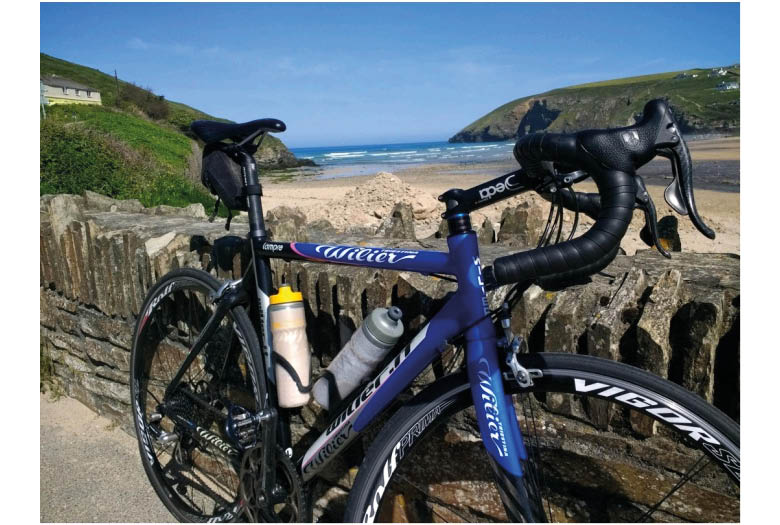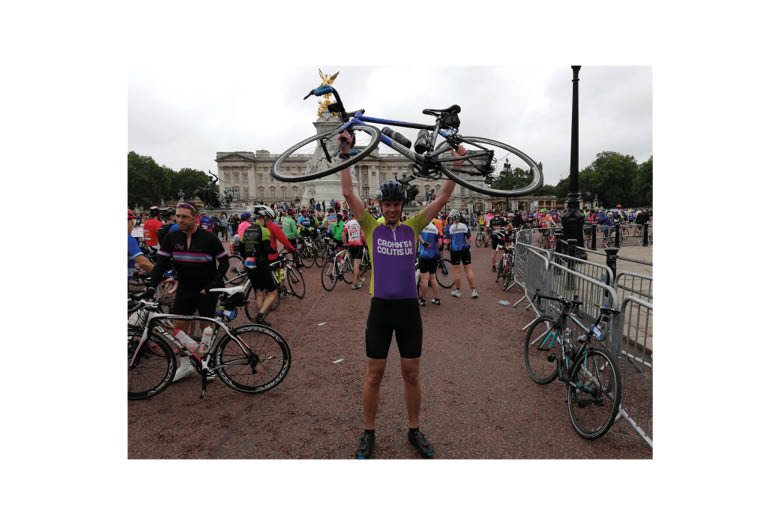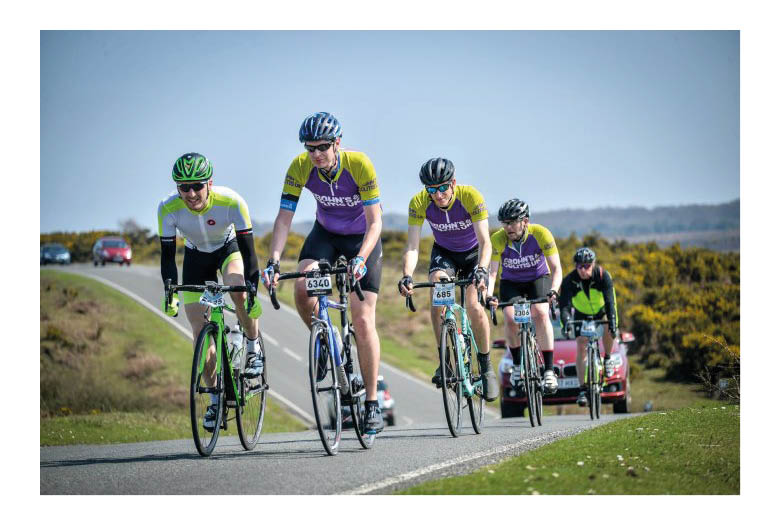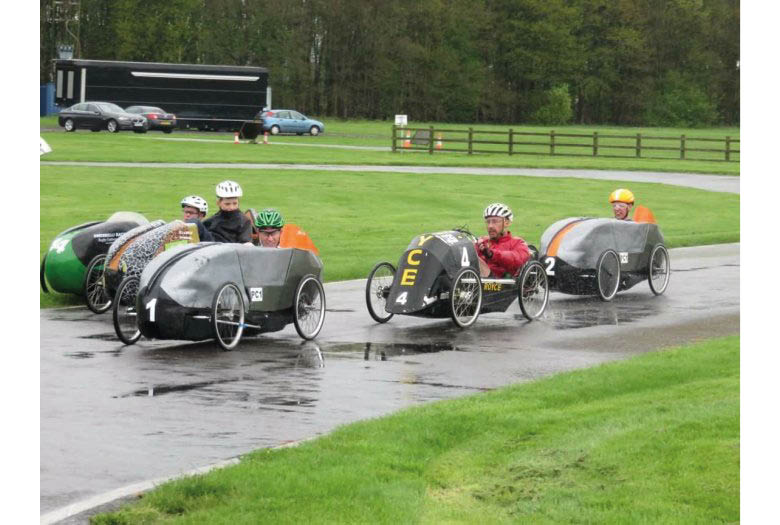In the hospital emergency department, when I was told I needed an ileostomy, my first thought about life with a stoma was not ‘What will my wife think?’ but ‘Will I be able to ride my bike?’.
In for repairs
I’d been diagnosed with ulcerative colitis (UC) earlier that year. I’d spent the summer out of hospital, rebuilding my strength, ready to go back to work. It was teaching at a school in Cornwall, in the southwest of the UK, where my wife and I had settled. When September came around, I had a flare and was admitted to hospital, where I was given adalimumab injections to calm the inflammation. However, this didn’t have the desired effect, and within 2 weeks I was back in a temporary bed in the emergency department. There, I was told that the medication wasn’t working and, to get better, I was going to need surgery, an ileostomy and a stoma bag. I heard these same words over and over again in my head.
Pumped up
In truth, in the days leading up to the operation, I was excited to be having the surgery. Sure, I wasn’t sure how I would feel about the change in my body image with a stoma. However, I have always taken pride in my fitness, and the worse my UC symptoms became, the harder it was becoming to exercise, enjoy myself and stay fit.
Within 20 minutes of the news, my phone was out, and I had found two blogs by cyclists with stomas, and these put me at ease. The first blogger described herself as recreational cyclist, and she wrote about going for leisurely rides through the countryside. The second blogger was a bicycle racer, who wrote about taking part in amateur and semi-professional races. These both came as a relief to me, as I consider myself somewhere in the middle. I’ve dabbled in racing and time trials, but most of the enjoyment I get out on my bike has been from riding with friends, whether on mountain or road bikes.

Cycling not only keeps you fit, but allows you to explore the world around you
Deflated and reflated
After I came out from surgery, it took a while for my stoma to start working properly. At first, my weight continued to drop, down to 54 kg. With this came bed sores and dehydration. I genuinely couldn’t see myself riding a bike again, at least not at the level I used to. Before my UC took hold, I was regularly doing rides of 80 km or more, but now I doubted if I could even reach 8 km.
Still, I was determined to get back on the winding, hilly roads that criss-cross the Cornish countryside. If I was going to attempt riding again, I wanted to be with someone else. Luckily, my former headteacher, who is also a keen cyclist, reached out to me and offered to take me out. The first time we managed 15 km, the second 25 km, and we continued to build until I managed 65 km. Not long after I started, I realised I was beginning to get my strength back.
This journey wasn’t straightforward. At the beginning of my recovery, I found that my core strength was lacking, and this hampered me on my longer rides. Reassured by this, I felt ready to get back racing, and to ride a two-wheeler high racing bike. I worked at it, and, by 2018, I was riding a well-known organised 100-mile bike ride around London to raise money for charity, which I completed despite awful weather.

Sport can provide a powerful sense of achievement
Kitted out
When I got back on the bike, there were a lot of questions I needed answering. What did I have to do differently to before? My experience has shown me that there are a few pieces of kit that helped.
It is essential to keep your stoma and the surrounding abdominal muscles supported, especially if you are engaging in strenuous exercise. This protects and strengthens the abdominal muscles, which are weakened by stoma-forming surgery, and thus decreases the risk of a parastomal hernia. The best way to do this is with support garments, including briefs, shorts and belts. I now wear mine when doing anything physical, from hoovering and mowing the lawn to long runs and hikes, but especially when I ride a mountain bike or go on gravel rides. Not only does it protect my muscles, I find it also stops the sensation of my stoma being jarred around as I ride.
Otherwise, a cyclist with a stoma doesn’t need to wear anything different to anyone else. However, I can recommend investing in a good pair of bib shorts. Bib shorts may look a little silly when you’re off your bike, but they are a fantastic invention. Because they are supported by straps that go over your shoulders, there is no elastic waistband to dig into your stomach or catch on your stoma bag.
Low rider |
|
While I was adjusting to life with a stoma, I looked into what might make it easier to cycle with a stoma bag. From my investigations, I ended up buying a recumbent bike. These have small wheels, a low-lying seat and pedals way out front, allowing the rider to sit right back in a recumbent position. A recumbent bike is something I’d always wanted. They have a special appeal to me, because they reminded me of the pedal cars I’d been racing since my teenage years. This endurance sport has teams of four or six riders racing in small pedal-powered cars for anything from 45 minutes to 24 hours. The recumbent bike has been very helpful in getting me back on the road and rebuilding my core strength is great. However, it is definitely not a necessity, and I still ride my road bike and mountain bikes. My wife is not quite pleased to have a third bike in the house, but I very much appreciate being able to choose which one to ride.
|
Spare tires
On long rides especially, it is important to know what do if your pouch fills up and needs changing. When I had my operation, someone sharing the ward with me recommended that I try switching from a one-piece pouch to a two-piece pouch. Emptying a detachable bag is far easier than changing the whole appliance, which is very convenient and reassuring for longer trips. In the past year, I’ve also discovered that the two-piece design allows me to turn the bag horizontally across my body when I cycle. This means it is supported by the front of my bib shorts, which stops the awkward rubbing sensation that I had with a one-piece pouch pointing down my leg.
I always carry a saddlebag on my bike. Along with the usual inner tube, tyre levers, multitool and emergency rain jacket, it always contains a spare stoma pouch bag, wrapped in a disposable nappy bag. This means that, when my bag is full, I can simply swap it for an empty one, tying the full one up in the nappy bag and disposing of it in a suitable bin. The nappy bag means that, when it rains, I no longer have to deal with a wet stoma bag and soggy toilet paper at every stop. This system has also been particularly useful during the coronavirus lockdown, when I haven’t been able to enter cafes or pubs to use their toilets; instead, the dog-poo bins that you find in small Cornish village have proved a helpful alternative.
There have been a couple of times when my pouch has failed me, particularly in super-hot weather. However, having a couple of spares has made riding easier and given me the peace of mind to cycle with confidence. I would always recommend carrying spares.

‘The most important thing is to get on your bike and ride’
Ride on
My experience has shown that, with a little preparation and determination, a stoma shouldn’t stop you from living an active life, whether enjoying the thrill of competitive sport or exploring the great outdoors. The most important thing is to get on your bike and ride.
Matt Tooke is a teacher and cyclist who lives with his wife in Cornwall, UK


